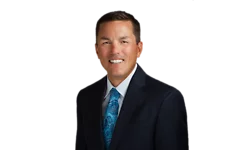California Department of Public Health School Re-Opening Framework and Guidance (January 14, 2021) and Its Application to Students Receiving Specialized Services
On January 14, 2021, the California Department of Public Health (CDPH) issued the COVID-19 and Reopening In-Person Instruction Framework and Public Health Guidance for K-12 Schools in California, 2020-2021 School Year (CDPH Framework/Guidance). This document contains guidance on provisions applicable to students receiving specialized services, including students with individualized education programs (IEPs), at-risk/at-promise youth, foster and homeless youth, English learners, high-need students, and pupils requiring mental health supports. For additional information about our Firm’s comprehensive summary and interpretation of the entire 51 page CDPH Framework/Guidance, please see here.
Cohorts
The new CDPH Framework/Guidance does not change the CDPH Guidance Related to Cohorts (amended September 4, 2020) (Cohorting Guidance). As a result, schools providing in-person instruction or service only to defined populations, such as special education students, may continue to do so in compliance with the Cohorting Guidance, and without filing a COVID-19 Safety Plan (CSP) or meeting other requirements set forth in the CDPH Framework/Guidance. It should also be noted that the term “cohort” does not include “stable groups.” “Stable groups” are conceptually similar to “cohorts” but defined differently in the CDPH Framework/Guidance and, consequently, are subject to the new CDPH Framework/Guidance. Districts with specific questions on these topics are advised to contact legal counsel.
Distance Learning and Technology Access
CDPH reemphasized that schools should continue to offer distance learning programs to students who request it. If a student is in a distance learning program, local educational agencies must ensure the student has access to connectivity and necessary access devices. For students with disabilities, this may mean providing additional accommodations and supports to ensure technology access.
Face Covering Requirements and Exemptions
CDPH Guidance for the Use of Face Coverings on November 16, 2020, generally permitted exemptions from face covering requirements for pupils with a medical condition, mental health condition, or disability that prevented wearing a face covering. The new CDPH Framework/Guidance now clarifies and requires that students in all grade levels must wear a face covering unless an exemption applies, e.g., those under age 2, those having a medical or mental health condition or disability that would impede properly wearing or handling a face covering, those with a communication disability, or those that would be inhibited in communicating with a person that is hearing impaired. Confirmation of the medical condition, mental health condition, or disability is made by the “school district health team and therapists.” Students with a valid exemption must still wear a “non-restrictive alternative, such as a face shield with a drape on the bottom, as long as their conditions permit it.”
Students with special needs who are not exempt and are noncompliant with the face covering requirement may be excluded and should be offered distance learning with their IEPs implemented to the greatest extent possible. CDPH also recommends that when a student refuses to wear a face mask or is “sub-optimally masked,” the school in question may want to consider notifying others who will share the space with the student, or utilize other mitigation strategies to optimize safety. Suggested strategies include opting for outdoor educational spaces when possible, installing clear physical barriers, and employing longer social distances.
This AALRR publication is intended for informational purposes only and should not be relied upon in reaching a conclusion in a particular area of law. Applicability of the legal principles discussed may differ substantially in individual situations. Receipt of this or any other AALRR publication does not create an attorney-client relationship. The Firm is not responsible for inadvertent errors that may occur in the publishing process.
© 2021 Atkinson, Andelson, Loya, Ruud & Romo
Attorneys
 Senior Associate628-234-6200
Senior Associate628-234-6200 Partner628-234-6200
Partner628-234-6200 Partner858-485-9526
Partner858-485-9526 Partner925-227-9200
Partner925-227-9200 Partner562-653-3200
Partner562-653-3200 Partner562-653-3200
Partner562-653-3200
